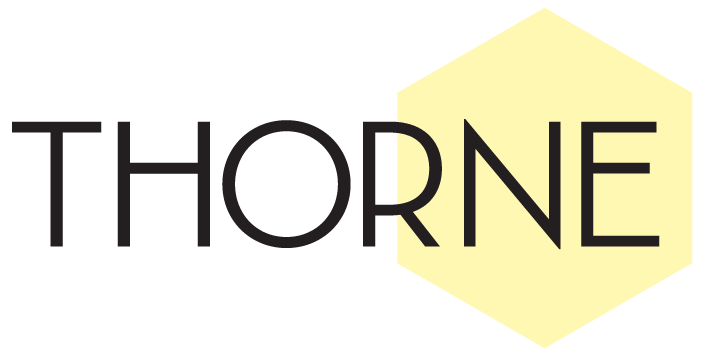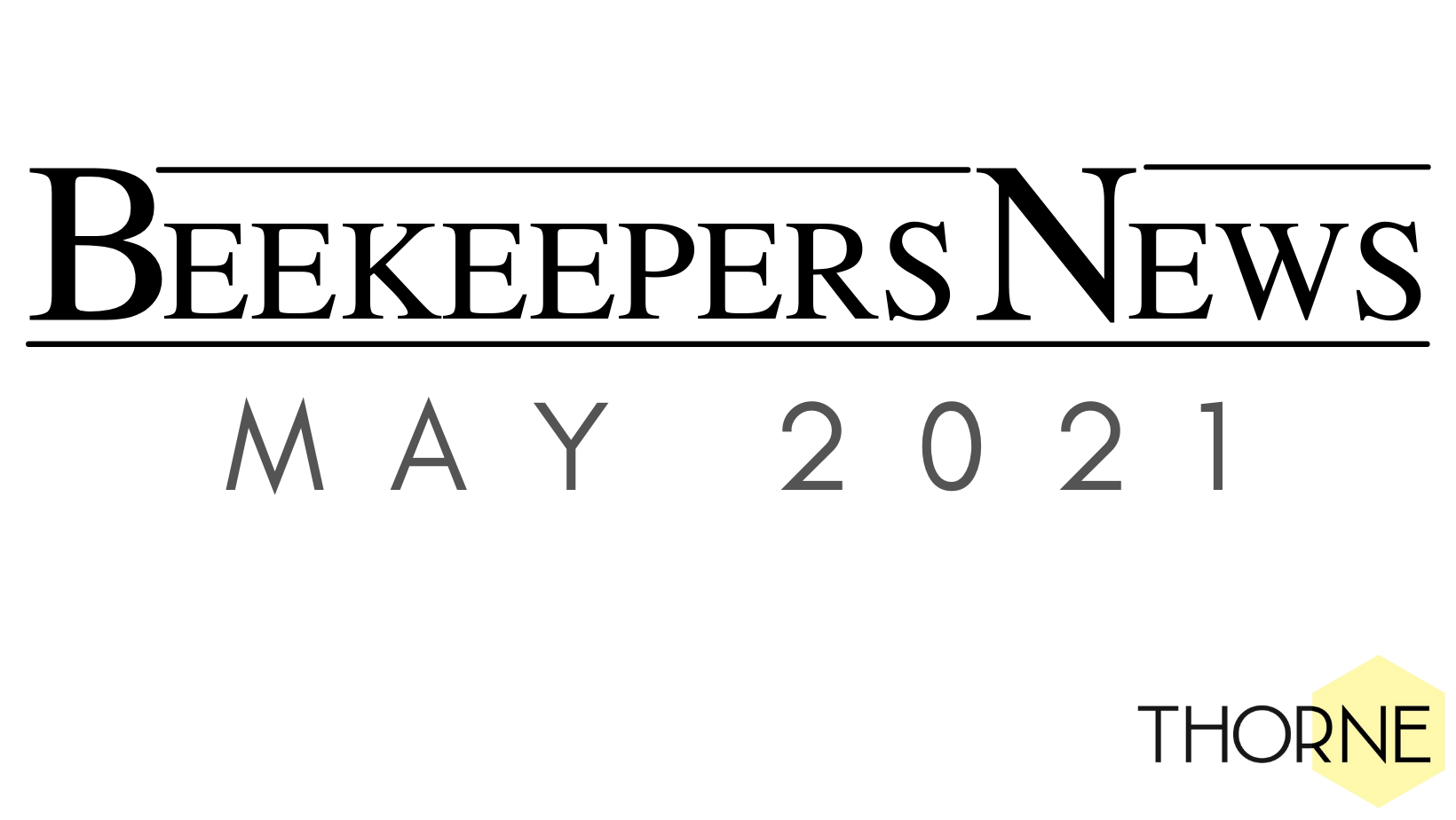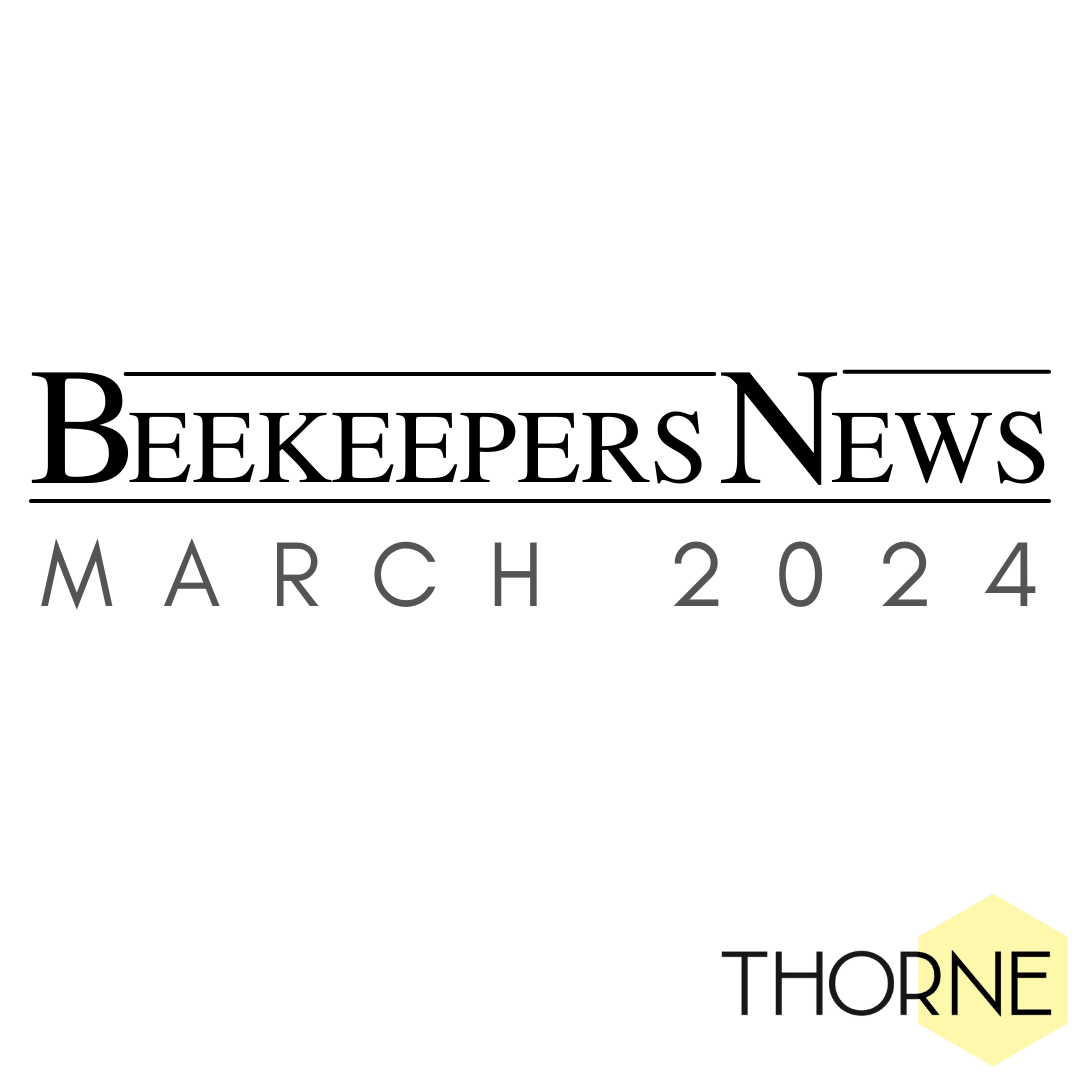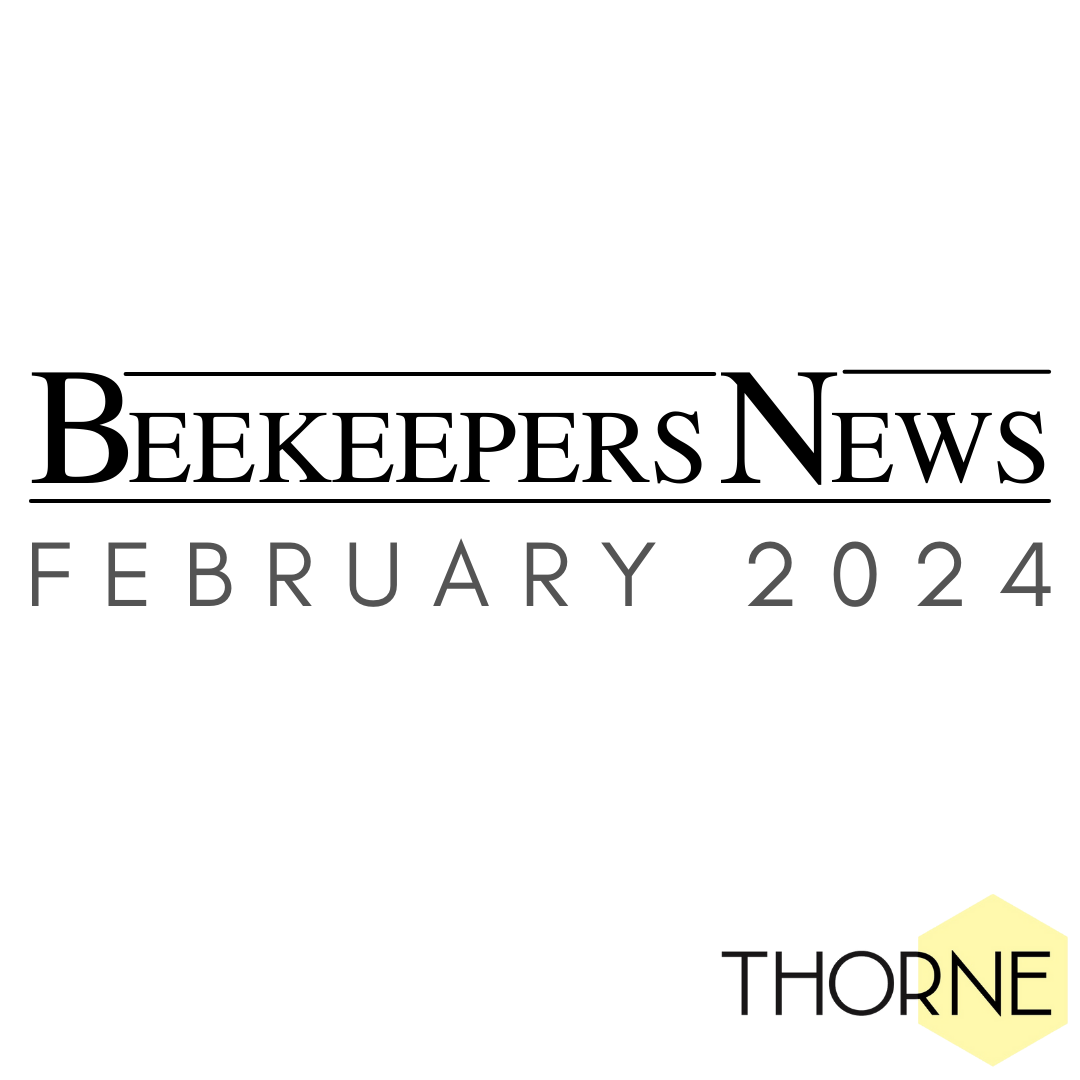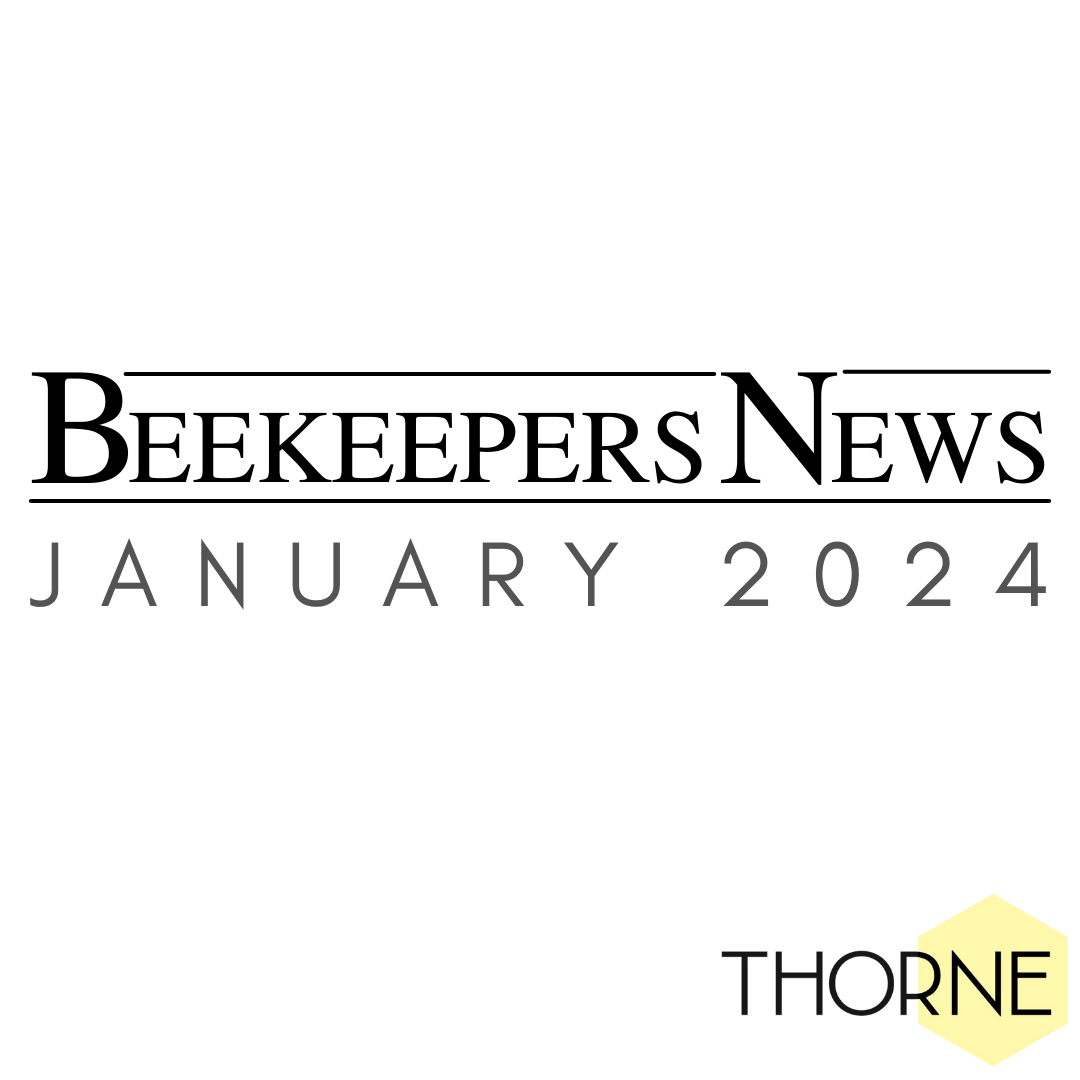This month has seen the successful re-opening of all our branches – and it has been lovely to see your faces (at a safe 2 metre distance!) again. Over at headquarters we have recently planted our new wild meadow and cannot wait to watch it grow and see how the bees enjoy it! We have seen lots of strong hives being opened this Spring, make sure you share yours with us on social media too, we love seeing them. We have already had bees heading out to their new homes, and more will be heading out this month. We hope they all settle in nicely!

This month’s special offer – Eco Chic Gifts
For the month of May we will be offering 10% off our entire range of Eco Chic products. From picnic blankets to waterproof ponchos, everything you need for your Bank Holiday plans!
Equipment Focus – New Protek Paint
We now have in stock Protek Royal Exterior paint, in a range of colours. This paint is bee-safe easy to use with virtually no odour and free of solvents. It is a low maintenance weatherproof coating that contains UV filters to protect colours from fading. Requires two to three thin coats and is suitable for smooth or rough timber. These paints are suitable for both wooden and polystyrene hives, but make sure to only paint the hive exteriors. We can supply any of Canadian Western Red Cedar assembled hives painted in these colours.
 Features:
Features:
• Long-lasting protection
• Low VOC (Volatile Organic Compounds)
• Low odour
• Water-based with linseed oil – natural renewable resource
• Translucent – allows wood grain to show through
• Rich long-lasting colour
• Water resistant with mould and fungal protection
• Microporous high-build coating
Coverage: 1 Litre will cover approximately 8m²
Protek Paint (in various colours) - £17.99
Ask the Expert – How to assemble frames with plastic foundation
As an alternative to wax foundation, some beekeepers find plastic foundation a handy addition to their set up. It fits into normal frames, just like standard wax foundation but will stand up to wear and tear season after season with the right care.
We supply two colours of plastic foundation: orange and black. The black allows you to see eggs very easily after the queen has laid them in the cells. Other than that, the colour is really for beekeeper preference; we don’t find it makes too much difference to the bees.
Advantages of plastic foundation include:
- It doesn’t require wiring
- Made from food grade plastic
- Only needs to be purchased once
- Deep cells and sharper cell edges encourage quicker acceptance
- No damage from wax moth
- Can be used year after year with proper care
- Can extract at high speed without breaking comb
Disadvantages of plastic foundation are:
- Conditions have to be near perfect for the bees to work it properly
- All frames in a box must be plastic or bees will build brace comb
- Can be fiddly to put together
- Not coated in wax so beekeeper has to do this at home
How to make up a frame with plastic foundation
Below we have added some images to show how to put together a frame with plastic foundation. It is much the same as putting together a frame with wax foundation. You can of course assemble your frames in whichever order you like, this is just our way of doing it:
- Start by assembling the top bar, side bars and one bottom bar.

- Slide the plastic foundation into place.

 Add the other bottom bar and nail both in as per the image. Do this on both sides. This should stop the foundation from falling out the bottom as it is too thick to fit between the gap.
Add the other bottom bar and nail both in as per the image. Do this on both sides. This should stop the foundation from falling out the bottom as it is too thick to fit between the gap.
 Nail in the wedge at the top to hold the foundation in place. This is tricky – try not to nail through the plastic, but keep the wedge tight against the top bar so that the foundation is kept firmly in place.
Nail in the wedge at the top to hold the foundation in place. This is tricky – try not to nail through the plastic, but keep the wedge tight against the top bar so that the foundation is kept firmly in place.
- Nail the side bar into the top bar on both front and back through the flat part.


- Next, you will need to coat the foundation in a thin layer of wax. To do this, melt some wax or old foundation down in a bain-marie and use a roller to roll it over the foundation. You can see this best on the black plastic.



Looking after your plastic foundation
To make sure your foundation is kept in tip top condition, clean it back to the base every two years and place the box with frames back onto a hive above the crownboard. The bees should clean this up nicely for re-use. However, if you want a more thorough clean, the frames can be steamed or soaked in soda and bleach. It can also be melted out at a low temperature – just make sure that it is low, as too high a temperature could cause the plastic to melt!
Blog

We’ve had an interesting month here in Lincolnshire, with the weather varying from lovely, sunny days to frosty, cold, almost wintery ones. This has given us a slight variation in each colony – smaller ones have stayed smallish as the cold snaps prevent them from building up too much, whereas the larger colonies have made the most of their time foraging outside the hive and are building up quickly.
 This month we have seen the bees bringing in lots of pollen. As you can see here there is even some that has been dropped onto the ground.
This month we have seen the bees bringing in lots of pollen. As you can see here there is even some that has been dropped onto the ground.
From those warm sunny days, we have also seen evidence of the bees building wax. As you can see in this picture, the bees had been feeding on fondant not long before and then suddenly with a bit of warm weather, they decided that it would be a good idea to draw some comb up and out of the hole in the crownboard!
The pollen patties that went down so well last month have now gone, with the remnants of the paper packaging being thrown out of the hive. It is really interesting to look at the entrance of a hive and on the floor around it to get an idea of what is going on inside the hive, even before you take off the roof. If you look closely, you will see shreds of white paper here on the ground:
of what is going on inside the hive, even before you take off the roof. If you look closely, you will see shreds of white paper here on the ground:
Finally, one of the more exciting jobs this month has been to mark any queens we have been able to find. We find that  it is a good time of year to do this as the colonies are only going to get bigger (hopefully!) and it is easier to find a queen in a smaller colony than in a big one.
it is a good time of year to do this as the colonies are only going to get bigger (hopefully!) and it is easier to find a queen in a smaller colony than in a big one.
Next month is normally our busiest time of year. We are about to see a couple of weeks of bad weather, but we are expecting that once the sun comes back out, that the bees will certainly be keeping us very busy!
Book review:
Treatment Free Beekeeping, by David Heaf
Rigorous metastudy marshals the evidence and pushes the debate forward
Published by Northern Bee Books and IBRA, 2021. £24.95 / US$30, 119 pages, ISBN 978-1-913811-00-6
This is a seminal work - the first comprehensive review of treatment free (TF) beekeeping around the world. The writing style is readable yet academically precise - no urban myths here, every statement is verified by reference to data and academic papers. The pattern that emerges is that you can easily help bees express a large repetoire of useful behaviour and abilities, which standard texts ignore, so there is something here for every level of reader.
David Heaf is well known for his books and courses combining the use of Warré hives and TF beekeeping. But perhaps more relevantly, he is also one of the great networking nodes in this area: running a major international forum, connecting people, and as a nexus, he monitors and is sent an awful lot of information that may pass others by. With a background in research biochemistry and technical translation, he regularly uses the forum to publicise and explain somewhat abstruse scientific papers, and is up to date with discoveries outside the Anglosphere. Oh, and he's kept bees for two decades.
Perhaps it was when Neumann and Blacquière published their 2017 paper on Darwinian Beekeeping that academia suddenly woke up to how many small scale beekeepers had already solved the problem of varroa, using simple open mating, natural selection and not worrying about the exact mechanisms. This contrasted sharply with 30 years' singular lack of significant progress by conventional breeders attempting to control and reinforce single traits.
This book looks at the successes, and a few failures, of non-treated apiculture over that 30 years; and the overwhelming message is "this works, with caveats".
Caveats include that relying on natural selection can result in high losses in countries where the bee stock is dominated by non-native bees (imports); yet in places using established wild landraces, it's like pushing at an open door. And despite the emphasis on static hives, there is also a lot here for bee farmers to ponder and perhaps adapt - because he covers a wide range of techniques.
So, to the meat of the book. This deceptively slim volume distils a myriad of sources and took me three days to chew through, partly because many of the 287 (!) references looked so interesting that I kept interrupting myself to check them - not the usual dry academic fare. The book is dense with relevant and fascinating information from the cutting edge of beekeeping. And it's concise, a rare quality in bee books - so usually pontifical - because it's focused on objectively summarising findings from various studies to clarify the big picture (does treatment free beekeeping work?), leaving you to follow references if you want more detail.
The book has a clear structure, which can be summarised as:
- Theory - Some basic discussion about chemicals used in beekeeping; how Heaf and his neighbours decided to try another path; the early live and let die 'Bond' experiments on isolated populations such as Gottland; a discussion of the ethics of beekeeping - arguments for and against intervention. How overly prescriptive local laws can hinder long term benefits.
- Examples - 30 inspiring examples of TF apiaries across Europe and North America. Practitioners of pure natural selection, demonstrating viability across many hive types, many climates, and many bee races over several decades. Even Italian bees can be varroa resistant in their native climate! Germany has a problem though due to the depletion of their native stock. The examples include studies using Warrés, Dadants, Kellam's hexagonal ecohive, Nationals, trough hives, Langstroths, Einraumbeutes, TBHs, Lazutins. This section also clarifies the different constraints across the world.
- Alternatives - in addition to full TF, there are other approaches discussed, including partial treatment-free techniques, drone trapping, pseudoscorpions, and small cell theory. It emerges that biotechnical methods of varroa control generally stress the bees and address symptoms rather than causes - thus require repeated application by the beekeeper; and they have unconvincing results if used on their own. Heaf also discusses how a poor feeding strategy can undermine other efforts.
- Conclusions - The data shows hive type has surprisingly little impact on bee survival; and commercially bred bees with a single varroa resistant trait don't seem to fare well outside their home area. And there are practical, evidence-based suggestions on how to maximise your colonies' chances of surviving treatment-free.
This structure, and an excellent index, makes it very easy to find information as well as giving a logical flow to the reading experience. Pictures are high quality, lots of detail can be seen.
What did I get out of this? Many of the references were new to me and merit further study: this book is like the tip of an iceberg with signs to information I'd never have found myself. It doesn't just cover key works and examples everyone's heard of, but fills in gaps, especially from the French and German speaking world. To put this another way, I follow this field closely, I've written articles on some of these issues before - and I learned a lot.
It will be particularly useful to researchers who are sometimes unaware of prior art in this field, with findings scattered across obscure journals and websites in many languages. And what's particularly exciting from a research view is that all these studies constitute a very long term, large 'natural experiment' - nulling out many confounding co-factors present in conventional studies of bees stressed out in unnatural conditions. TF beekeeping has been ignored for a long time precisely because its non standard methods make direct comparisons tricky... but as data on different approaches has built up since ~1990, this breadth has become a strength, showing consistent results across many conditions. And this book is the map to those studies.
What is not covered
It is illuminating that very few words are given to consider diseases - this is because most of them are only a problem in the stresses of intensive intrusive beekeeping, they just don't factor much in a treatment-free beekeeper's life. There's little difference in management for animal pests and predators so, they are only mentioned in passing.
It's valid to ignore poly hives, as intensive bee farming neutralises bees' own coping mechanisms anyway. Likewise, there is little point discussing management in regions where bee species have high natural resistance (AHB, Apis cerana, African bees, etc.) and Australia (no varroa - yet).
A curious hole in everyone's data, which a number of citizen science projects are now addressing, is numbers and survival of wild bee colonies. It's particularly frustrating in retrospect as this is where most naturally evolved varroa resistant stock originated. Perhaps a future edition will be able to discuss loss rates and health in these and the related, lightly managed, Zeidler and log hives.
I'd have been interested in more detail on the progress of scientists and very large scale commercial breeders to produce hygienic bees, but it's fair enough to focus on what has actually worked thus far, and that's generally working on a smaller scale with local stock.
The UK represents 12 of the 30 examples of TF beekeeping. I think it could have been even more useful if it also covered more French and Irish practitioners and studies. These countries have a strong tradition of using local (black) bees, and like Britain there is a less prescriptive attitude to beekeeping, and some extensive TF and wild bee research projects.
Rating: 5/5 for beekeepers considering treatment free, and api scientists. Information rich but very readable.
Available from http://www.northernbeebooks.co.uk , http://www.ibra.org.uk and the usual online resellers.
Paul Honigmann
Bees for development
 We are incredibly grateful for the support of all generous donors during our Big Give Green Match appeal in April. A total of over £50,000, including match funds, was raised; this will be transformational for people and places around Digya National Park in Ghana, where this sustainable option to make a living is possible amongst rich natural resources. We made a short film just before the appeal began, which you can watch online at https://beesfordevelopment.org/about-us/video-gallery/
We are incredibly grateful for the support of all generous donors during our Big Give Green Match appeal in April. A total of over £50,000, including match funds, was raised; this will be transformational for people and places around Digya National Park in Ghana, where this sustainable option to make a living is possible amongst rich natural resources. We made a short film just before the appeal began, which you can watch online at https://beesfordevelopment.org/about-us/video-gallery/
National Honey Show 21st to 23rd October 2021
For this year’s show our team are still working hard planning for all eventualities to present the best possible National Honey Show under prevailing government guidelines. Do please keep an eye on our website for the latest news www.honeyshow.co.uk
Meanwhile we invite you to visit our YouTube Channel where you can view a wealth of lectures from previous years as well as some snippets from visitors telling us about their participation in, and what they enjoy about the show.
www.youtube.com/c/NationalHoneyShowUK/videos
We hope restrictions will continue to ease, that you and your bees have an enjoyable and productive summer, and look forward to welcoming you at The National Honey Show itself in October.
 We are happy to announce that Parsonage Farm Bees are now a stockist of Thorne products. You can find them in Preston, Canterbury. For more information, please contact Lisa & George on 07977442282.
We are happy to announce that Parsonage Farm Bees are now a stockist of Thorne products. You can find them in Preston, Canterbury. For more information, please contact Lisa & George on 07977442282.
